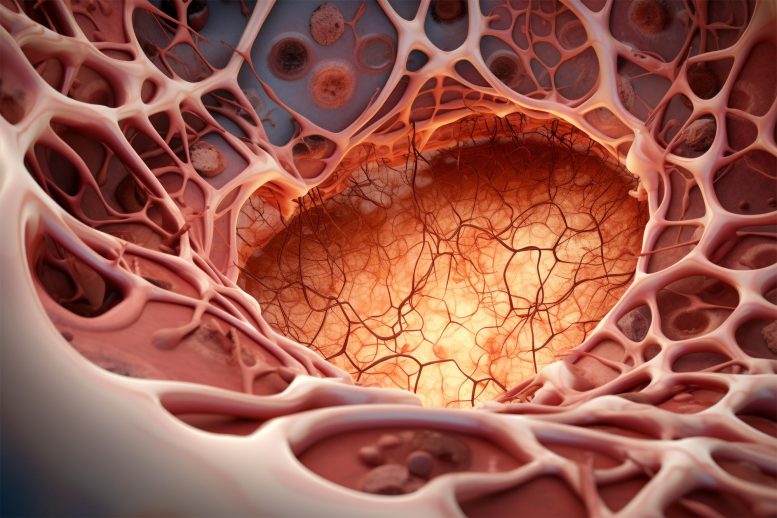Researchers have uncovered a significant relationship between sphingolipids and the memory of innate immune cells. This discovery opens up new treatment possibilities for diseases where the immune system is overly active, such as autoimmune disorders and cardiovascular diseases. The team found that manipulating sphingolipids in immune cells can either inhibit or stimulate their memory, with the protein acid ceramidase playing a pivotal role in this process. This breakthrough suggests new therapeutic approaches to balance the immune response. Credit: SciTechDaily.com
Researchers at Radboud University Medical Center have discovered an intriguing link between sphingolipids, a mysterious type of fat named after the ‘Sphinx’, and the memory of cells in the innate immune system. This finding opens up exciting possibilities for creating novel therapies for a range of diseases, such as autoimmune conditions, cancer, cardiovascular diseases, and in the field of organ transplantation. The details of this breakthrough are detailed in a publication in Cell Reports.
The innate immune system, crucial for defense against infections, plays a key role in various diseases involving the immune system. The researchers have demonstrated that sphingolipids can reprogram the memory of innate immune cells, offering new possibilities for treatment.
The memory of innate immune cells, also known as trained immunity, enables these cells to respond stronger and faster during recurrent infections, a vital capability. However, in diseases where the innate immune system is overreactive, such as autoimmune diseases, cardiovascular diseases, and organ transplantations, this can have adverse effects. Understanding the molecular mechanisms behind this ‘memory’ is essential for developing new treatments for these diseases.
Manipulating Innate Immune Memory with Fats
An international research team led by Raphaël Duivenvoorden, together with researcher Nils Rother, discovered that sphingolipids play a crucial role in regulating trained immunity. Using nanoparticles containing sphingolipids, they demonstrated that these fats determine the induction of trained immunity.
Some sphingolipids inhibited memory, while others stimulated it. What makes this discovery even more remarkable is that inhibiting the protein acid ceramidase, which regulates sphingolipid metabolism in cells, had the most potent effect on suppressing trained immunity. Rother states: “By inhibiting acid ceramidase, we can completely suppress the activation of trained immunity.”
A New Target for Treatment
These findings provide new insights into how trained immunity is regulated and offer a new target for the development of treatments for diseases involving trained immunity. Manipulating the sphingolipid balance in innate immune cells opens new possibilities for developing therapies that can restore the balance between effective defense and an overactive response.
Reference: “Acid ceramidase regulates innate immune memory” by Nils Rother, Cansu Yanginlar, Geoffrey Prévot, Inge Jonkman, Maaike Jacobs, Mandy M.T. van Leent, Julia van Heck, Vasiliki Matzaraki, Anthony Azzun, Judit Morla-Folch, Anna Ranzenigo, William Wang, Roy van der Meel, Zahi A. Fayad, Niels P. Riksen, Luuk B. Hilbrands, Rik G.H. Lindeboom, Joost H.A. Martens, Michiel Vermeulen, Leo A.B. Joosten, Mihai G. Netea, Willem J.M. Mulder, Johan van der Vlag, Abraham J.P. Teunissen and Raphaël Duivenvoorden, 22 November 2023, Cell Reports.
DOI: 10.1016/j.celrep.2023.113458
Note: This article have been indexed to our site. We do not claim legitimacy, ownership or copyright of any of the content above. To see the article at original source Click Here














